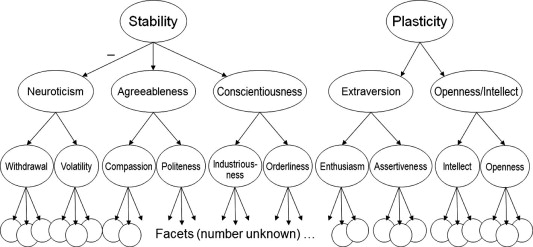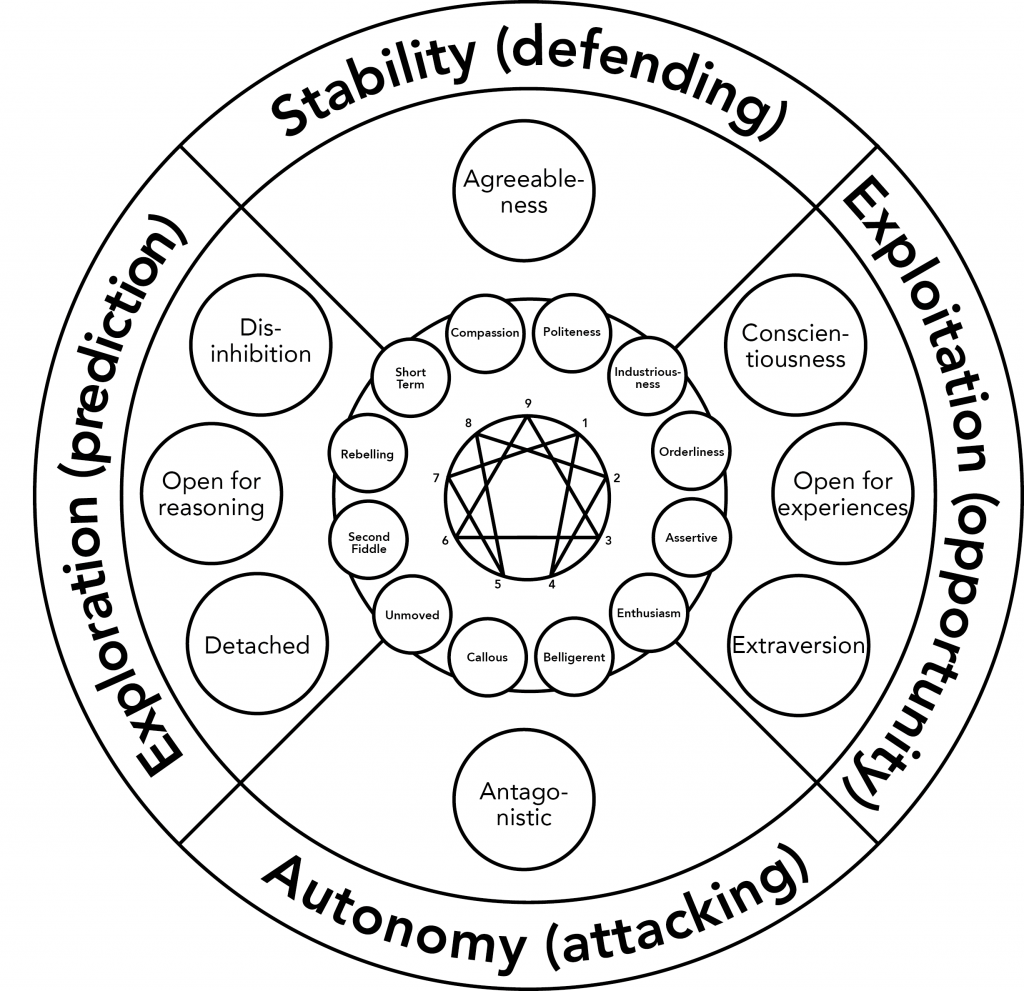Cybernetic Big Five Theory is the most scientific way of looking at personality as it is based on neuroscience rather than psychology. Cybernetic Big Five Theory is of course a form of cybernetics. The first lesson of Cybernetic Big Five Theory is that there isn’t such a thing as personality. Thinking in terms of traits turned out to be the wrong approach. Instead there are evolutionary behavioral patterns that our brain produced due to the biological structure of our brain. Although it is called Cybernetic Big Five Theory, in reality there are different levels of abstraction as to describe these evolutionary behavioral patterns. At the highest level of abstraction there is the Big Two, followed by the Big Five and the Big Ten.
Cybernetic Big Five Theory is extremely important for football. For knowing which evolutionary behavioral pattern your players have, makes the difference between understanding them and knowing how to deal with them or not. For more than twenty years I have developed The Neurogram® model which is based on Cybernetic Big Five Theory, but provides a dynamic version of Cybernetic Big Five Theory that shows how people evolutionary behavioral patterns change depending on whether they are stressed or relaxed or neither. The Neurogram® also allows you to determine people’s typical set of evolutionary behavioral patterns without the need of an fMRI scanner.
Here is the hierarchical heuristic scheme of Cybernetic Big Five Theory:

| Evolutionary Behavioral Pattern | Cybernetic Function | Opposite Pole |
| Big Two | ||
| Stability (defending) | Protection of goals, interpretations, and strategies from disruption by impulses | Creativity (attacking) |
| Exploration (scanning) | Creation of new goals, interpretations, and strategies | Exploitation (passing) |
| Big Five | ||
| Extraversion | Behavioral exploration and engagement with specific rewards (i.e., goals to approach) | Detached |
| Openness to experience (tactics) | Cognitive exploration and engagement with information | Openness to reasoning (strategy) |
| Conscientiousness (discipline) | Protection of nonimmediate or abstract goals and strategies from disruption | Disinhibition (undisciplined) |
| Agreeableness | Altruism and cooperation; coordination of goals, interpretations, and strategies with those of others | Antagonistic |
| Unflappable | Defensive responses to uncertainty, threat, and punishment | Neuroticism |
| Big Ten | ||
| Assertiveness | Incentive reward sensitivity: drive toward goals | Letting others go first |
| Enthusiasm | Hedonic reward sensitivity: enjoyment of actual or imagined goal attainment | Unenthusiastic |
| Even tempered | Active defense to avoid or eliminate threats | Volatility |
| Self-assured | Passive avoidance: inhibition of goals, interpretations, and strategies in response to uncertainty or error | Withdrawal (anxiety, depression) |
| Intellect | Detection of logical or causal patterns in abstract and semantic information | Unintellectual |
| Openness to experience | Detection of spatial and temporal correlational patterns in sensory and perceptual information | Imperceptive |
| Industriousness | Prioritization of nonimmediate goals | Undisciplined |
| Orderliness | Avoidance of entropy by following rules set by self or others | Disorganized |
| Compassion | Emotional attachment to and concern for others | Callous |
| Politeness | Suppression and avoidance of aggressive or norm-violating impulses and strategies | Belligerent |
(Source: DeYoung, C. G., & Weisberg, Y. J. (2019). Cybernetic approaches to personality and social behavior. In M. Snyder & K. Deaux (Eds). Oxford Handbook of Personality and Social Psychology, Second Edition (pp. 387–414). New York: Oxford University Press)
Cybernetic Big Five Theory and football
In my own research I am working with a circumplex model of Cybernetic Big Five Theory. DeYoung himself is also looking into circumplex models for his work. What is still speculative is whether defending as Stability, attacking as Autonomy / Creativity, opportunity as in seeing chances and exploiting them through passing as Exploitation and prediction (also known as vision or game intelligence in football) as Exploration also correlate with specific sets of these evolutionary behavioral patterns. If they do, the circumplex model looks like this:

